Stability is key in modern fishing kayaks, offering both safety and an enhanced paddling experience. Crafted with materials like HDPE, fiberglass, and composite resins, these kayaks provide superior maneuverability, control, and durability. Strategic design focuses on balance through width, weight distribution, and foam core integration, preventing tipping even when carrying gear. Control features like handles and fins further improve stability and precision casting. Rigorous testing ensures a finely-tuned kayak for safe and productive fishing adventures. The future of fishing kayaks includes advanced materials, smart technology, and customizable designs catering to diverse anglers.
Discover the secrets behind the ultimate fishing kayak design—stable, easy to control, and tailored for angling excellence. In this comprehensive guide, we explore why stability is key in these versatile watercraft. From understanding the demands of fishing trips to material choices and testing methods, we dissect the components that make a kayak both steadfast and maneuverable. Learn how these features enhance the overall experience for anglers, ensuring precision casting and secure rides on various waters.
Understanding the Need for Stability in Fishing Kayaks
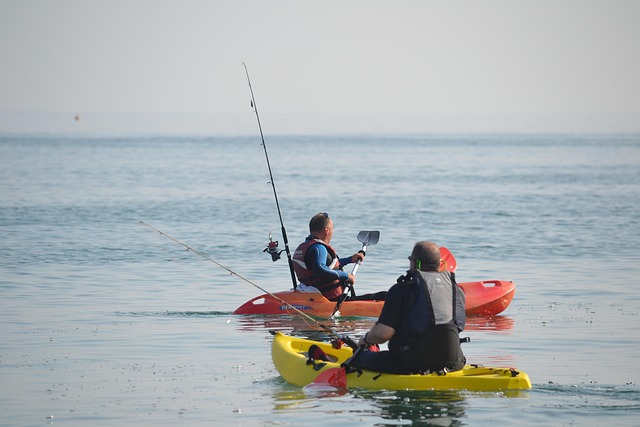
In the world of outdoor recreation, fishing kayaks have gained immense popularity due to their versatility and accessibility. However, beyond the excitement of exploring waterways lies a crucial consideration: stability. A stable fishing kayak is not just a comfort; it’s a safety feature that ensures a more enjoyable and secure paddling experience. Unstable kayaks can be challenging to control, especially when navigating rough waters or casting lines.
The need for stability in fishing kayaks cannot be overstated. A well-designed, stable kayak allows paddlers to focus on the art of fishing rather than constantly battling with their vessel’s balance. This is particularly important for beginners who are still learning the ropes of kayaking and experienced anglers looking for a smooth, reliable platform to enhance their outdoor adventures.
Key Factors Contributing to a Stable Design

A stable and easy-to-control design in a fishing kayak is pivotal for an enjoyable and safe paddling experience. Key factors contributing to this stability include the kayak’s overall shape and hull design, weight distribution, and the materials used. A well-designed kayak typically has a wider beam, ensuring it doesn’t capsize easily, while also providing ample space for equipment and a comfortable seat. The hull should be streamlined yet allow for efficient water displacement, enabling smooth turning and maneuverability without losing stability.
Additionally, the placement of the center of gravity is crucial. A balanced weight distribution between the front and rear ends helps maintain stability even when casting or maneuvering heavy fishing gear. High-quality materials like fiberglass or composite resins contribute to a robust and durable kayak, enhancing its structural integrity and ensuring it remains steady in various water conditions—from calm lakes to choppy seas.
Benefits of Easy-to-Control Maneuverability
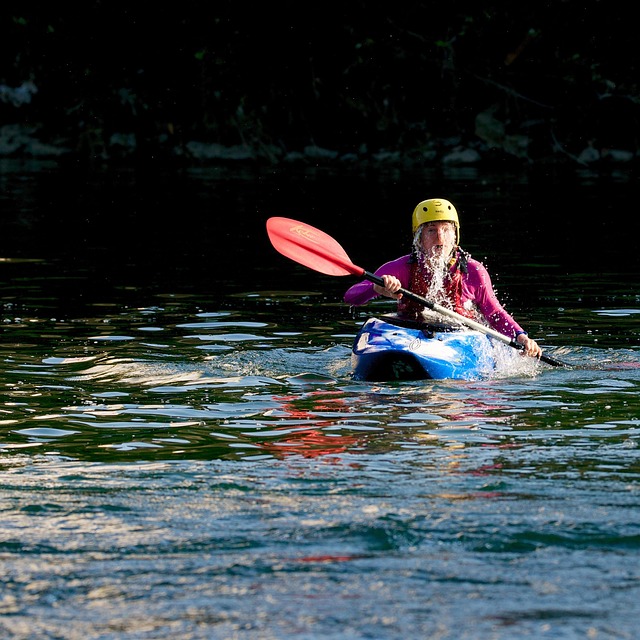
In the realm of fishing kayaks, easy-to-control maneuverability offers a myriad of benefits that enhance the overall experience for enthusiasts and professionals alike. The ability to effortlessly navigate tight spaces, gracefully change direction, and precisely position your kayak is invaluable when seeking the perfect fishing spot or maneuvering among structures. This control allows anglers to access hard-to-reach areas, increasing their chances of catching prized fish.
Furthermore, easy maneuverability ensures a more comfortable and relaxed journey on the water. Kayakers can quickly adjust their course to avoid obstacles, choppy waters, or unexpected currents, preventing potential accidents and reducing stress. This control also facilitates better observation and access to diverse habitats, enabling kayakers to study underwater ecosystems and locate various species of fish more effectively.
Material Choices for Enhanced Stability

When designing a fishing kayak, material choice plays a significant role in ensuring stability and control. Kayaks crafted from high-density polyethylene (HDPE) offer exceptional stability due to their rigid structure and low center of gravity. This material is durable, lightweight, and easy to maneuver, making it ideal for fishing enthusiasts who need to navigate calm waters or gently swaying lakes. HDPE’s strength-to-weight ratio allows kayakers to balance effortlessly while casting lines or scanning the horizon for fish.
Additionally, incorporating materials like foam core and composite fibers enhances stability further. These lightweight yet robust components distribute weight evenly, preventing the kayak from tipping. This is particularly beneficial when carrying fishing gear or resting against a wave. The combination of these materials creates a stable platform, enabling anglers to focus on their catch without worrying about balancing their craft.
Crafting a Balanced Kayak Structure

Crafting a balanced kayak design is an art, especially for those who spend their days on the water as anglers. In the realm of fishing kayaks, stability and control are paramount to ensure a comfortable and productive day out on the lake or river. A well-designed kayak should offer a stable platform, enabling anglers to effortlessly cast lines and make precise landings without feeling unsteady.
The key lies in achieving a harmonious balance between the kayak’s length, width, and weight distribution. Kayaks designed for fishing typically feature wider beam widths, providing extra stability while also offering more room for storage and gear. Additionally, the placement of the kayak’s center of gravity is crucial; a lower center of gravity improves stability by reducing the risk of capsizing. This balanced structure allows anglers to effortlessly paddle and maneuver, making every cast and catch that much more enjoyable.
Incorporating Control Features: Handles and Fins
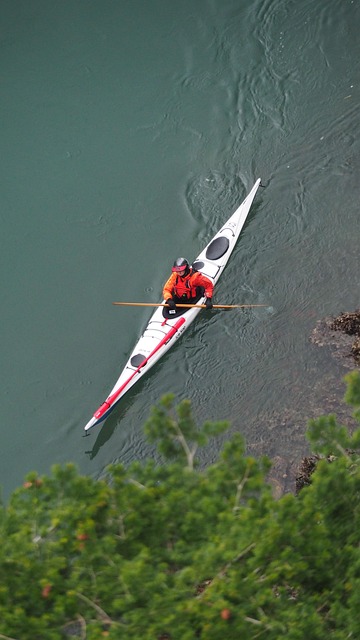
Incorporating control features like handles and fins into a fishing kayak design is paramount for enhancing maneuverability and stability. These components play a crucial role in enabling kayakers to effortlessly navigate through various water conditions, from calm lakes to choppy seas. Handles, strategically placed along the kayak’s deck, offer points of contact for precise steering and balance, making it easier to turn and adjust course without compromising stability.
Fins, on the other hand, contribute significantly to the kayak’s tracking and speed control. Well-designed fins can cut through water with minimal effort, allowing anglers to maintain a steady course while casting or retrieving lines. This ease of control is particularly beneficial in fishing kayaks, where precision and comfort are essential for a successful day on the water.
Testing and Refining the Design Process
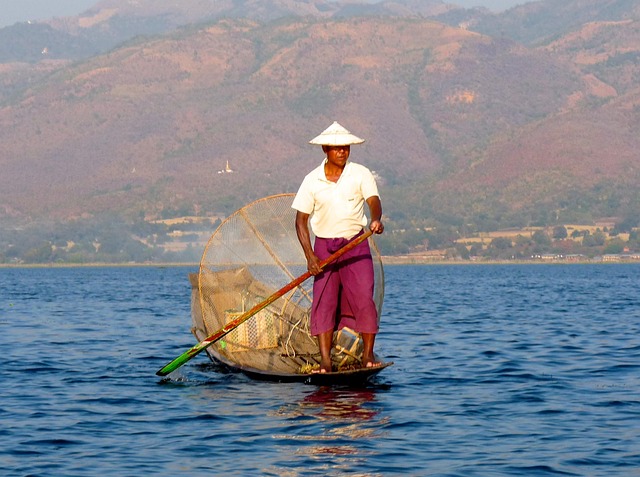
In the pursuit of a stable and easy-to-control fishing kayak, rigorous testing and refining are paramount. The design process begins with conceptualization, followed by prototyping and simulation to gauge performance in various conditions. Experienced kayakers and designers collaborate to conduct real-world trials, testing maneuverability, stability, and cargo capacity. Feedback from these tests is invaluable, revealing areas for improvement such as hull shape, fin placement, or material choices.
Through iterative cycles of design modifications based on test results, the kayak evolves into a finely-tuned machine. This continuous refinement ensures that each component serves a purpose, enhancing both safety and performance on the water. The ultimate goal is to create a fishing kayak that not only meets but exceeds user expectations, offering a seamless and enjoyable paddling experience.
Real-World Applications: Angler Feedback

In the realm of outdoor recreation, a stable and easy-to-control design in watercraft is highly sought after, especially for enthusiasts of fishing kayaks. The integration of advanced engineering principles has led to the development of versatile fishing kayaks that offer exceptional maneuverability and balance. These kayaks are meticulously crafted to cater to the specific needs of anglers, providing them with a secure and comfortable platform to navigate rivers, lakes, and coastal waters.
Real-world applications have proven that stable fishing kayaks significantly enhance the overall angling experience. The design’s stability allows for easier casting and retrieval of lines, ensuring anglers can focus on the art of fishing rather than balancing their equipment. Moreover, these kayaks’ control features enable precise navigation, enabling anglers to access hard-to-reach spots and increase their chances of reeling in a catch. With their versatile nature, stable fishing kayaks cater to both novice and experienced anglers, promising an enjoyable and productive day on the water.
Future Trends in Stable, Easy-to-Control Fishing Kayaks
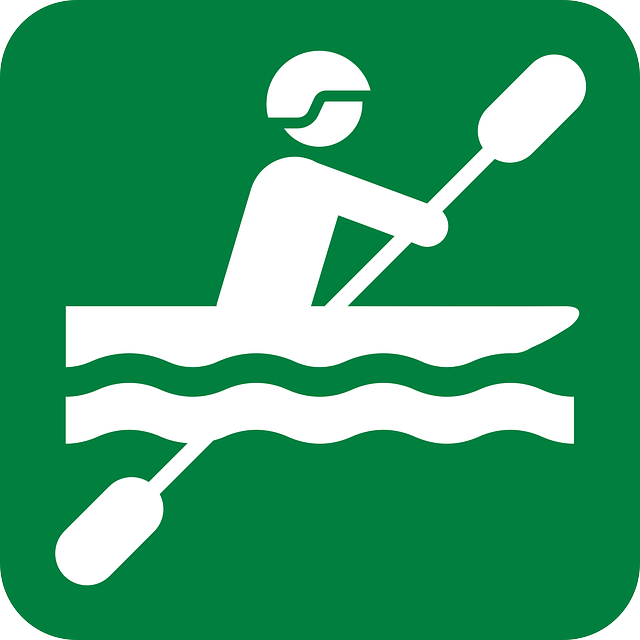
The future of fishing kayaks is ripe with innovation, aiming to enhance stability, control, and user-friendliness even further. One prominent trend involves the integration of advanced materials and designs that promise improved buoyancy and maneuverability. Manufacturers are exploring lighter yet robust composites and foams, making these watercraft more accessible for recreational anglers while still catering to serious enthusiasts.
Another emerging trend is the development of smart features within fishing kayaks. These include integrated GPS systems, digital displays for speed and depth readings, and even autonomous navigation capabilities. Additionally, there’s a growing focus on customizable fit and ergonomic design elements, ensuring that kayakers can personalize their craft to accommodate different body types, fishing styles, and gear configurations, thereby enhancing comfort and performance during extended trips.
